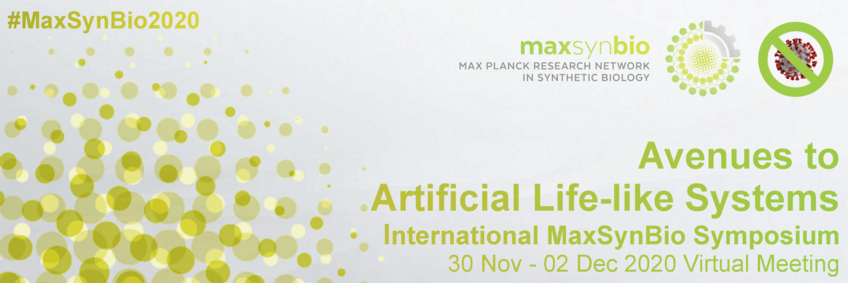
#32 - Cell-free protein synthesis in hyaluronan microgels
Anika Kaufmann (Leibniz-Institut für Polymerforschung Dresden e. V., Dresden)
Tuesday, 01 Dec 21:15 - 22:00 CET
Access to the BigBlueButton rooom for this Mini Talk via the lists for Monday and Tuesday.
Please make yourself familiar with BigBlueButton before you join the Mini Talk - read the instructions.
Abstract
Title: Cell-free protein synthesis in hyaluronan microgels
Author(s): Anika Kaufmanna, Thomas Heidaa, Tony Köhlera and Julian Thielea
Affiliation(s): aLeibniz-Insitut für Polymerforschung Dresden e. V., Dresden, Germany
Abstract: Cell-free protein synthesis (CFPS) has evolved into a versatile tool for efficient and tailored synthesis of a multitude of proteins, especially proteins which are difficult to synthesize in vivo. Furthermore, CFPS can be used to understand and mimic dynamic and functional aspects of living cells. In our studies we are using bifunctional hyaluronan microgels for DNA coupling and further immobilization of the as-synthesized proteins [1]. For this purpose, hyaluronan was modified with methylfuran groups which were used for the coupling of dibenzocyclooctyne (DBCO) and nitrilotriacetic (NTA) groups. Azide-modified DNA encoding for histidine-tagged proteins was linked to DBCO via strain-promoted azide-alkyne cycloaddition. After performing CFPS inside the membrane-free and porous microgels the produced histidine-tagged proteins are directly immobilized via NTA groups within in the microgels. We successfully applied this approach for the model protein GFP as well as for producing a functional enzyme, namely malonyl-CoA synthetase which is a key enzyme of the polyketide synthesis pathway [2]. For future applications it will be also possible to investigate the influence of a compartmentalized reaction environment within our artificial microgel environment. By systematically tuning the thickness and porosity of the microgel matrix, the reaction kinetics as well as the diffusional behavior of proteins under spatial regulation can be studied. With the findings of our studies, we aim for a deeper understanding of processes in CFPS and how to regulate them.